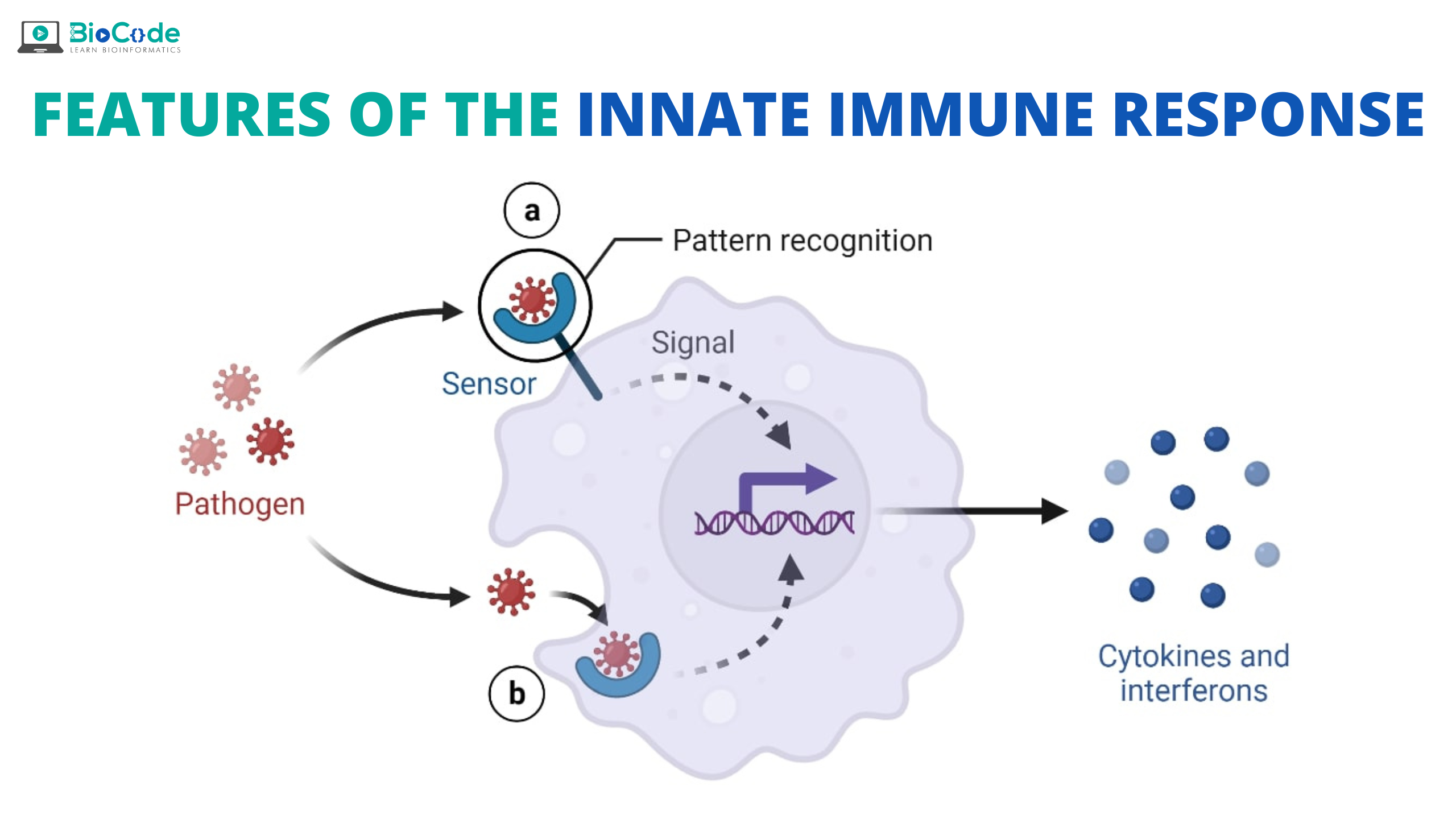General Features and Specificity of Innate Immune Responses
The two principal types of reactions of the innate immune system are inflammation and antiviral defense.
Inflammation
It occurs by accumulation and activation of leukocytes and plasma proteins at sites of infection or tissue injury. These cells and proteins act together to kill mainly extracellular microbes and to eliminate damaged tissue.
Antiviral Defense
Innate immune defense against intracellular viruses is mediated by natural killer (NK) cells, which kill virus-infected cells. Cytokines called type I interferons block viral replication within host cells. The innate immune system responds in essentially the same way to repeat encounters with a microbe, whereas the adaptive immune system mounts stronger and more effective responses to each successive encounter with a microbe. The innate immune system recognizes structures that are shared by various classes of microbes and are not present on normal host cells. The components of innate immunity have evolved to recognize structures of microbes that are often essential for the survival and infectivity of these microbes. The innate immune system also recognizes molecules that are released from damaged or necrotic host cells. Such molecules are called damage-associated molecular patterns (DAMPs). The innate immune system does not react against the normal host.
Antiviral Defenses Natural Killer Cells
Natural killer (NK) cells recognize infected and stressed cells and respond by killing these cells and by secreting the macrophage activating cytokine IFN-γ. NK cells contain abundant cytoplasmic granules and express some unique surface proteins but do not express immunoglobulins or T cell receptors. On activation by infected cells, NK cells empty the contents of their cytoplasmic granules into the extracellular space at the point of contact with the infected cell. The granule proteins then enter infected cells and activate enzymes that induce apoptosis. With CTLs, NK cells function to eliminate cellular reservoirs of infection and eradicate infections by obligate intracellular microbes, such as viruses.
Cytokines of Innate Immunity
Cytokines are soluble proteins that mediate immune and inflammatory reactions and are responsible for communications between leukocytes and between leukocytes and other cells. Most of the molecularly defined cytokines are called interleukins. In response to microbes, dendritic cells, macrophages, mast cells, and other cells secrete cytokines that mediate many of the cellular reactions of innate immunity.
Role of Innate Immunity at Different Stages Of Microbial Infection
Entry:
The earliest defense mechanisms active are epithelia, antimicrobial molecules and lymphoid cells, providing physical
barriers
In The Tissues:
Microbial detection is done by resident macrophages, dendritic cells, and mast cells. Some of these cells react by secreting cytokines, which initiate the process of inflammation, Phagocytes residing in the tissues or recruited from the blood destroy the microbes and eliminate the damaged cells.
In The Blood:
Plasma proteins, including proteins of the complement system, react against microbes and promote their destruction. Viruses elicit special reactions, including the production of interferons from infected cells that inhibit infection of other cells and the killing of infected cells by NK cells.
Initiation of a Local Inflammatory Response:
Bacterial entry through wounds activates initial innate immune mechanisms, including phagocytosis by and activation of resident cells, such as macrophages and dendritic cells. Recognition of bacteria by soluble and cellular pattern recognition molecules initiates an inflammatory response that recruits antimicrobial substances and phagocytes (first neutrophils and then monocytes) to the site of infection.

